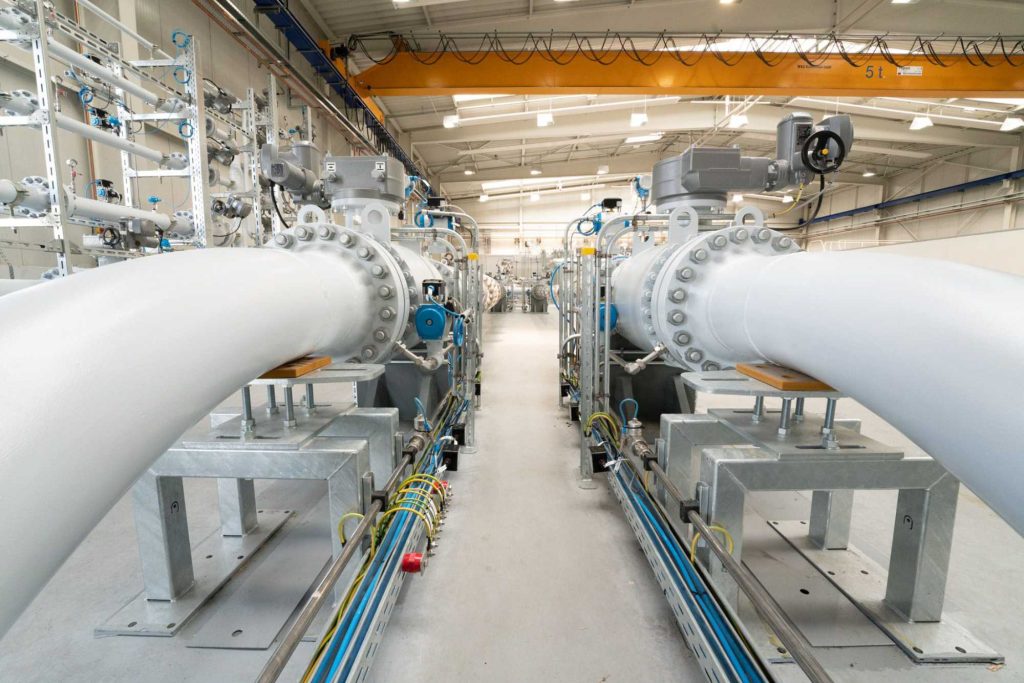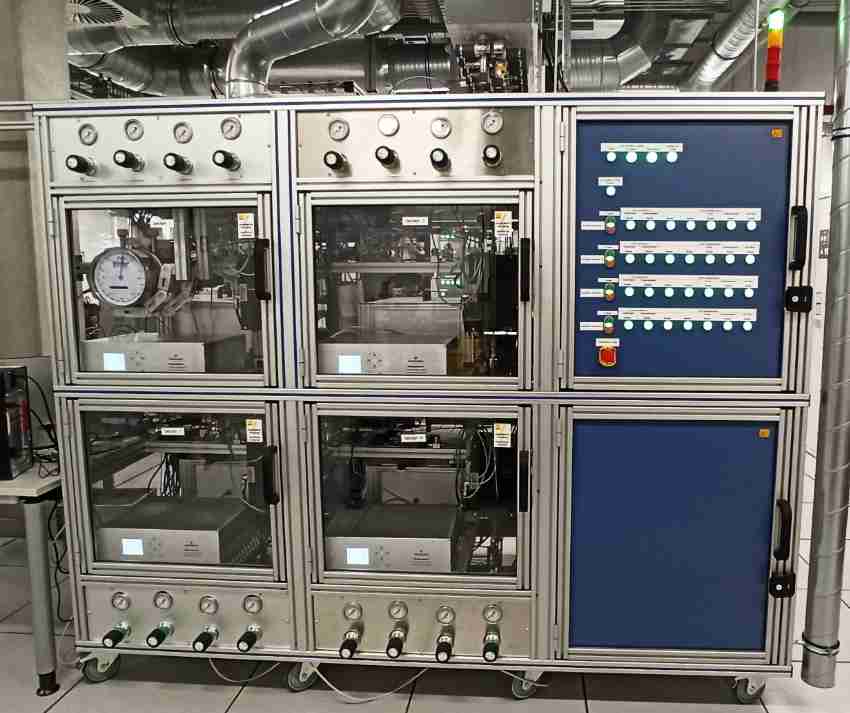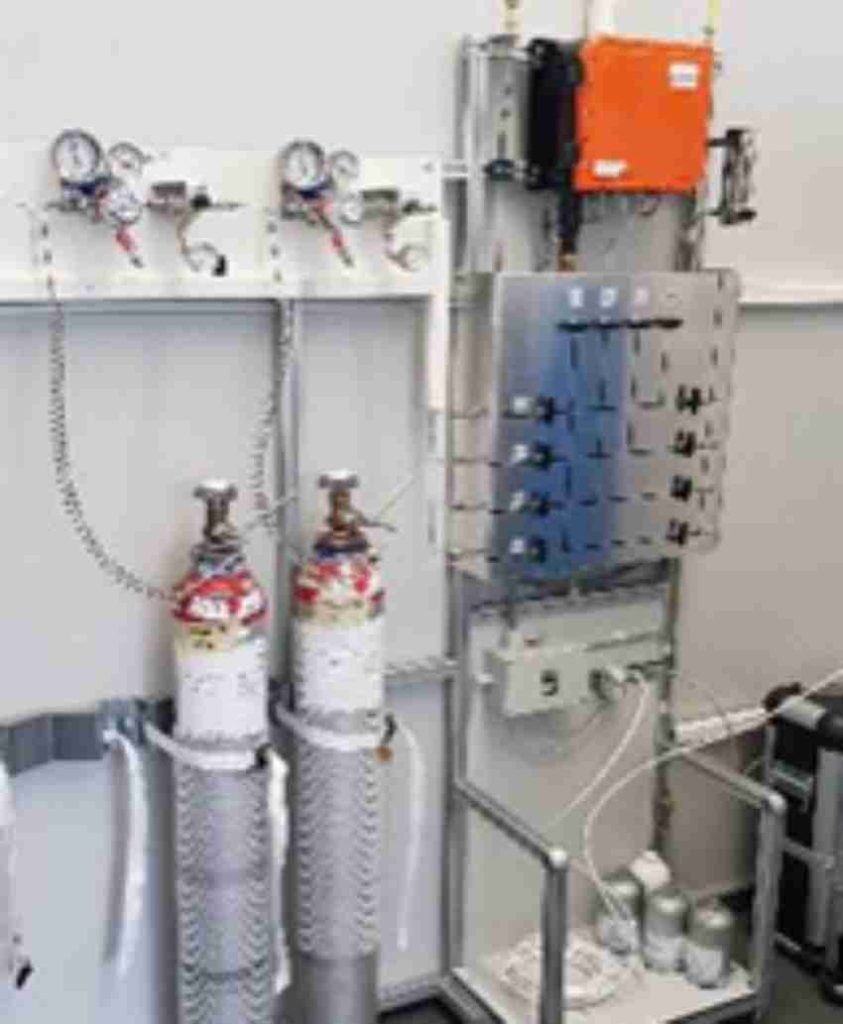Germany is taking the path to link together energy security and climate neutrality, going in the direction of becoming a „hydrogen republic“. The German National Hydrogen Strategy is paving the way and envisages security of supply through intra-European production as well as diversification and securing international imports of hydrogen. This inevitably results in the need for a supra-regional transport and storage infrastructure for the energy carrier.
At this point, TransHyDE, as one of the three hydrogen flagship projects funded by the Federal Ministry of Education and Research (BMBF) alongside H2Giga (series production of electrolysers) and H2Mare (green offshore hydrogen and power-to-x production from wind turbines), makes a key contribution to the implementation of the National Hydrogen Strategy.
A total of 109 partners and other associated partners are working on ten projects to overcome the technological and economic obstacles that are currently hampering the efficient transport and storage of green hydrogen. The BMBF’s funding for TransHyDE totals around 145 million euros over a period of four years starting going from April 2021 to March 2025. The technical focus of TransHyDE is on four different transport options: gaseous hydrogen, liquid hydrogen, ammonia and liquid organic hydrogen carriers. TransHyDE also analyses the regulatory framework and makes recommendations for an accelerated ramp-up of the hydrogen economy.
Below a brief overview of the ten TransHyDE projects is given.
System Analysis deals with the systemic analysis of transport solutions for hydrogen. The core task is the representation of the spatial and temporal development of the transport infrastructure for hydrogen from the perspective of the energy-intensive industry as well as the optimisation of economic costs. The roadmap developed in the project summarises the scientific-technical project progress, the systemic classification of the transport technologies and the resulting statements. A first comprehensive outline of the project results is presented in the flagship publication “European Hydrogen Infrastructure Planning”. It provides the reader with a deeper insight into the analysis of the future development of hydrogen demand, supply, infrastructure and storage options and derives initial recommendations for decision-makers in industry and politics.
Safe Infrastructure develops and demonstrates materials and engineering principles to ensure the safe operation of a hydrogen pipeline network. This involves modifying component designs, enhancing material mechanics and metrology, allowing for the testing of existing natural gas pipelines for H2 suitability and safe utilisation in H2 applications. Additionally, Safe Infrastructure also focuses on developing new products suitable for hydrogen applications. Apart from some key innovations described in the brochure „Kickstarters for a hydrogen economy“ the project is demonstrating the transformation process of a natural gas distribution grid into a hydrogen gas grid for which a pilot test has started in September 2023. Ten households and one commercial customer are provided with 100% hydrogen for their space and water heating.

AmmoRef investigates and develops an application oriented, industrially feasible, safe and cost-effective technology for ammonia reforming, that is the recovery of pure hydrogen, in order to ensure an environmentally friendly, economical and safe solution for the future energy supply. For this reformation catalysts are been evaluated on a specially designed catalyst test bench. An innovative, highly effective catalyst consisting of the relatively inexpensive base metals iron and cobalt has been developed. Its special production method allows a very high active metal particle loading on a nanoscale range.

AppLHy! analyses and applies various technologies for the supply, efficient storage and transport of liquid hydrogen (LH2). The works include hydrogen liquefaction, contactless level measurement and pumping, utilisation of cold and synergetic transport (LH2 and superconductivity). Initial application scenarios and components have already been developed in order to demonstrate the feasibility of the synergetic concept in a test environment as the project progresses.
Standardisation collates a status quo of technical standards and develops a needs analysis and recommendations for action to close gaps in standardisation and certification. The currently existing national, relevant European and international technical standards and certification programs for the TransHyDE transport vectors (gaseous and liquid hydrogen, ammonia and liquid organic hydrogen carriers LOHC) have been compiled in a database.
LNG2Hydrogen develops a scientifically sound collation of data and formulates recommendations as a basis for decision-making to enable sustainable and long-term usage of LNG terminals as logistic hubs for hydrogen and its derivatives (H2 transport vectors). Additionally, further research and development needs are identified.
Mukran investigates storage and transport of gaseous hydrogen in order to supply consumers who are not connected to a H2 pipeline network. Moreover, spherical storage vessels are being developed that are characterised by an optimal compromise between load- and material-appropriate geometry as well as low manufacturing and operating costs, thus enabling efficient transport with a high payload ratio.
GET H2 TransHyDE supports the development of pipeline-based transport infrastructure for hydrogen, essential infrastructure and operational issues are being addressed such as measurement of gas quality. In this regard, scientific and technical work objectives are being pursued along the entire transport chain from feed-in of green hydrogen to feed-out. A respective test loop of a newly build hydrogen pipeline as well as a repurposed natural gas pipeline is in the process of being put in operation. The hydrogen loop enables further the testing of hydrogen compatibility of materials, real time measurement of gas quality by means of a micro gas chromatograph system (another TransHyDE innovation), the optimisation of compression concepts, smart pigging in hydrogen atmosphere and aerbourne remote leakage detection.

CAMPFIRE develops the entire ammonia value chain, from production to storage, transport and usage. This includes stationary and mobile applications, fueling stations, logistics and infrastructure as well as regulatory framework and acceptance. Amongst other results the combustion processes for ammonia-hydrogen fuel mixtures on a respective single-cylinder engine were successfully tested with attractive efficiency levels. The combustion processes are now being transferred to the full engine configuration and coupled with ammonia crackers.
Helgoland researches a ship-based hydrogen supply chain from the offshore area in the Schleswig-Holstein coastal sea to the hydrogen consumers on the mainland. In this supply chain, the example of Heligoland will be investigated as a model location for safely storing hydrogen via hydrogenation in liquid organic hydrogen carriers (LOHC) based on the thermal oil benzyl-toluene, and Hamburg as a location for releasing hydrogen from this LOHC via dehydrogenation.

